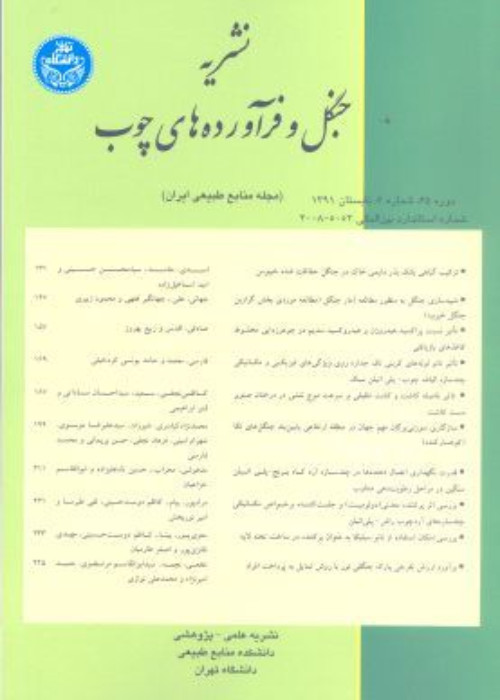Superior properties of timbers used in the art of Chutashi (traditional wooden kitchen utensils in the north of Iran)
Author(s):
Article Type:
Research/Original Article (دارای رتبه معتبر)
Abstract:
The art of "Chutashi" or "Lucktarashi" is the manufacture of traditional wooden boxes and containers using forest trees in Mazandaran province, which has a long history. The purpose of this research was to identify the wooden species used in Chutashi and to investigate their distinctive features and technological (physical, mechanical) excellence. Hence, rough or semi-finished wood specimens were collected with different dimensions and shapes from local workshops. The handicraftsmen's reason for preferring these woods and their presumed superior characteristics were also recorded. The moisture content, density, shrinkage, and the swelling of the wood as well as mechanical properties including shear strength perpendicular to grain, cleavage strength, side hardness, and Charpy impact strength (toughness) were measured on seven kinds of selected specimens (maple root, maple trunk, Boissier pear, wych elm, boxwood, yew, and walnut). To further investigate the reason behind the desirability or undesirability of certain woods, their xylem was examined under a microscope and/or a stereomicroscope. Summarizing the views of the craftsmen showed that they prefer the root wood of maple and close-to-bark lumbers of mature, thick trees. Moreover, that part of a tree trunk, which is less exposed to the sun and is covered by moss, is more suitable for Chutashi. Mechanical tests showed that the shear strength perpendicular to the grain in the elm, cleavage in maple and walnut, the toughness of maple and boxwood, and the hardness in the yew had the highest values. Also, boxwood had the highest density, and yew showed the least shrinkage. Microscopic examinations clearly revealed the wider vessels, more homogeneity, and more interlocked grains in the root wood compared with the trunk one. The phenomenon of "Ahanak (ironlet)" in the yew, which causes a sharp drop in its quality, is, in fact, the accumulation of special extractives in several tracheid rows. Finally, the relationship between physical-mechanical characteristics and the views of the craftsmen was discussed and presence of superior properties in the selected timbres were verified.
Keywords:
Language:
Persian
Published:
Journal of Forest and Wood Products, Volume:75 Issue: 2, 2022
Pages:
155 to 167
magiran.com/p2480452
دانلود و مطالعه متن این مقاله با یکی از روشهای زیر امکان پذیر است:
اشتراک شخصی
با عضویت و پرداخت آنلاین حق اشتراک یکساله به مبلغ 1,390,000ريال میتوانید 70 عنوان مطلب دانلود کنید!
اشتراک سازمانی
به کتابخانه دانشگاه یا محل کار خود پیشنهاد کنید تا اشتراک سازمانی این پایگاه را برای دسترسی نامحدود همه کاربران به متن مطالب تهیه نمایند!
توجه!
- حق عضویت دریافتی صرف حمایت از نشریات عضو و نگهداری، تکمیل و توسعه مگیران میشود.
- پرداخت حق اشتراک و دانلود مقالات اجازه بازنشر آن در سایر رسانههای چاپی و دیجیتال را به کاربر نمیدهد.
In order to view content subscription is required
Personal subscription
Subscribe magiran.com for 70 € euros via PayPal and download 70 articles during a year.
Organization subscription
Please contact us to subscribe your university or library for unlimited access!



